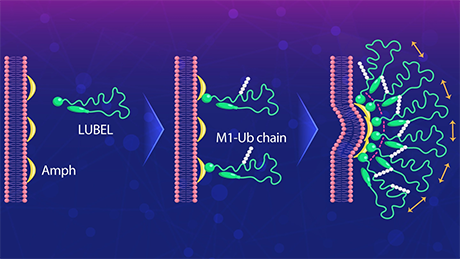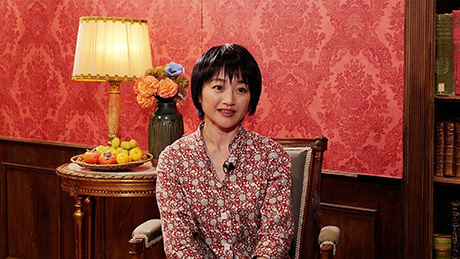Life Science and Technology News
Turning the Heat on: A Flexible Device for Localized Heat Treatment of Living Tissues
Combining thermotherapy with other treatment modalities can improve the treatment's effectiveness. However, there is a dearth of suitable heat-generating wireless devices that can be implanted in the patient's body enabling greater flexibility and ease of treatment. Recently, researchers at Tokyo Institute of Technology (Tokyo Tech) have invented a unique induction-based flexible heating device that can address these gaps. The study has been published in the journal Advanced Functional Materials.

Thermotherapy or heat treatment can help in treating lesions and other tissue injuries. For example, chemotherapy or radiotherapy, when combined with thermotherapy, kills tumorous cells more effectively. Thermotherapy is considered a promising approach for treating internal lesions, but the advancement in the field depends on the availability of patient-friendly heat-inducing devices capable of rapidly increasing the temperature of target tissues.
Current clinical practices around thermotherapy majorly employ heat-generating devices that are probed inside the human body or are in contact with the skin. Receiving energy from external power sources and often operating through converging magnetic fields, these devices are usually large in size and static, limiting the movement of patients and also prolonging operational time.
An alternative option is small and flexible devices that can be implanted in the patient's body; however, such implantable devices must be flexible, body-compatible, heat resistant, and be powered wirelessly for heat generation—some of the criteria that are essential for their clinical use.
Recently, researchers at Tokyo Tech have innovated a heat-generating device that can revolutionize the field of thermotherapy by meeting all of the above criteria. Their innovation was reported in an article published in Advanced Functional Materials. Discussing their motivation, Associate Professor Toshinori Fujie, who led the study, explains "One of the major obstacles in developing an implantable heating device is the requirement of incorporating electronic elements such capacitors in the circuit of the device itself. Such insertion takes away the flexibility required for internal implantation. To overcome this, we took the help of induction-heating, the same technology that is used in cooking heaters". The working of such a device is based on the premise that the magnetic field generated by a coil with a high-frequency current induces current flow in a closely placed metal. Owing to its internal resistance, the metal then heats up automatically.
Developing such an induction heating device required ingenious design. First, the researchers printed the electronic wiring on a polyimide film with an ‘ink’ made of gold-nanoparticles. Next, a layer of poly (D, L-lactic acid) or PDLLA was coated above the printed film. In addition to heat-durability, the PDLLA layer is biodegradable and biocompatible, making it an excellent candidate for the base material of the device. Then, using tweezers, the researchers peeled off the PDLLA layer, causing it to come off the polyimide film. The result was a flexible device, conformably attaching to human skin, with electronic wirings printed on it.
Once the device showed satisfactory electrical performance, mechanical strength, and heat generation capacity, the researchers assessed its clinical functionality by planting it on living tissue—the hepatic lobe of a beagle dog. The results were extremely promising. When a transmitter coil was placed directly on the device for one minute, the temperature of the liver tissue increased up to 7°C without any indication of tissue burning.
Assoc. Prof. Fujie highlights the feat of their research "The flexibility, biocompatibility, and wireless-powered heating capacity of our device opens up the possibility of using thermotherapy in wide clinical scenarios including minimally invasive endoscopic surgery. Moreover, by adjusting the number and size of these devices, lesions of different sizes can be treated"
What an incredible localized solution to revolutionize the medical field globally!.
- Reference
| Authors : | Masato Saito1, Eiichi Kanai2, Hajime Fujita1, Tatsuya Aso3, Noriyuki Matsutani3, and Toshinori Fujie1 |
|---|---|
| Title of original paper : | Flexible Induction Heater Based on the Polymeric Thin Film for Local Thermotherapy |
| Journal : | Advanced Functional Materials |
| DOI : | |
| Affiliations : | 1 School of Life Science and Technology, Tokyo Institute of Technology |
| * Corresponding author's email: |
- Toshinori Fujie selected as "Emerging Investigators 2019" by Biomaterials Science| Life Science and Technology News
- [Labs spotlight] Fujie Laboratory|Life Science and Technology News|Department of Life Science and Technology, School of Life Science and Technology
- Fujie Laboratory
- Researcher Profile|Tokyo Tech STAR Search - Toshinori Fujie
- Department of Life Science and Technology, School of Life Science and Technology
- Azabu University
- Teikyo University
- Latest Research News
School of Life Science and Technology
—Unravel the Complex and Diverse Phenomena of Life—
Information on School of Life Science and Technology inaugurated in April 2016
Further Information
Associate Professor Toshinori Fujie
School of Life Science and Technology, Tokyo Institute of Technology
E-mail : t_fujie@bio.titech.ac.jp






